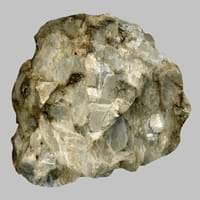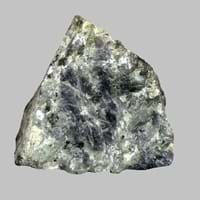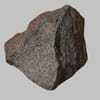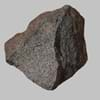Definition
Sovite is a coarse-grained variety of carbonatite which belongs to intrusive igneous rock
Anorthosite is a granular igneous rock composed largely of labradorite or plagioclase
Discoverer
Unknown
Unknown
Etymology
Not Available
From French anorthose plagioclase + -ite1
Class
Igneous Rocks
Igneous Rocks
Sub-Class
Durable Rock, Soft Rock
Durable Rock, Medium Hardness Rock
Other Categories
Coarse Grained Rock, Fine Grained Rock, Medium Grained Rock, Opaque Rock
Coarse Grained Rock, Opaque Rock
Texture
Granular, Poikiloblastic
Foliated, Glassy
Color
Black, Brown, Colourless, Green, Grey, Pink, White
Black, Bluish - Grey, Brown, Green, Grey, Light Greenish Grey, Pink, White
Durability
Durable
Durable
Appearance
Dull, Banded and Foilated
Layered, Banded, Veined and Shiny
Interior Uses
Decorative Aggregates, Homes
Decorative Aggregates, Floor Tiles, Homes, Interior Decoration
Exterior Uses
As Building Stone, Garden Decoration, Office Buildings
As Building Stone, As Facing Stone, Garden Decoration
Other Architectural Uses
Curbing
Curbing
Construction Industry
As a Flux in the Production of Steel and Pig Iron, As a Sintering Agent in Steel Industry to process Iron Ore, As Dimension Stone, Cement Manufacture, for Road Aggregate, Making natural cement, Manufacture of Magnesium and Dolomite Refractories, Unknown, Unknown
As Dimension Stone, Cement Manufacture, for Road Aggregate
Medical Industry
Taken as a Supplement for Calcium or Magnesium
Not Yet Used
Antiquity Uses
Artifacts
Artifacts, Sculpture, Small Figurines
Commercial Uses
An Oil and Gas Reservoir, As a Feed Additive for Livestock, Creating Artwork, Gemstone, Metallurgical Flux, Production of Lime, Soil Conditioner, Source of Magnesia (MgO)
Creating Artwork, Curling
Types
Not Available
Proterozoic Anorthosite and Archean Anorthosite
Features
Available in lots of colors, Generally rough to touch, Is one of the oldest rock
Generally rough to touch, Is one of the oldest rock
Archaeological Significance
Monuments
Not Yet Used
Not Yet Used
Famous Monuments
Not Applicable
Not Applicable
Sculpture
Not Yet Used
Used
Famous Sculptures
Not Applicable
Not Applicable
Pictographs
Used
Not Used
Petroglyphs
Used
Not Used
Figurines
Not Yet Used
Used
Formation
Sovites are formed due to low degrees of partial melting of rocks.
Anorthosite is a phaneritic, intrusive igneous rock which is characterized by a predominance of plagioclase feldspar which is almost 90–100%, and a minimal mafic component.
Mineral Content
Ancylite, Apatite, Barite, Fluorite, Magnetite, Natrolite, Sodalite
Amphibole, Clinopyroxene, Ilmenite, Magnetite, Olivine, Orthopyroxene
Compound Content
CaO, Carbon Dioxide, Sodium Oxide
Ca, CaO, Chromium(III) Oxide, MgO, Sulfur Trioxide
Types of Metamorphism
Burial Metamorphism, Cataclastic Metamorphism, Contact Metamorphism, Hydrothermal Metamorphism, Impact Metamorphism, Regional Metamorphism
Cataclastic Metamorphism, Contact Metamorphism
Types of Weathering
Biological Weathering, Chemical Weathering, Mechanical Weathering
Biological Weathering
Types of Erosion
Chemical Erosion, Coastal Erosion, Glacier Erosion, Sea Erosion, Water Erosion, Wind Erosion
Chemical Erosion, Wind Erosion
Grain Size
Medium to Fine Coarse Grained
Coarse Grained
Fracture
Conchoidal
Irregular
Porosity
Less Porous
Less Porous
Luster
Subvitreous to Dull
Pearly to Subvitreous
Cleavage
Not Available
Irregular
Toughness
1
Not Available
Specific Gravity
2.86-2.87
2.62-2.82
Transparency
Opaque
Translucent
Density
2.84-2.86 g/cm3
2.7-4 g/cm3
Specific Heat Capacity
Not Available
Resistance
Heat Resistant, Pressure Resistant
Heat Resistant, Impact Resistant, Pressure Resistant, Scratch Resistant, Wear Resistant
Deposits in Eastern Continents
Asia
China, India, Kazakhstan, Mongolia, Russia, Uzbekistan
Not Yet Found
Africa
Namibia, Nigeria, South Africa
Not Yet Found
Europe
Austria, Denmark, Germany, Great Britain, Netherlands, Norway, Poland, Sweden, Switzerland, United Kingdom
Bulgaria, France, Germany, Greece, Hungary, Italy, Latvia, Lithuania, Malta, Poland, Portugal, Romania, Slovenia, Spain, Sweden, The Czech Republic
Others
Greenland
Not Yet Found
Deposits in Western Continents
North America
Canada, USA
Canada
South America
Brazil
Bolivia, Colombia
Deposits in Oceania Continent
Australia
New South Wales, New Zealand
Central Australia, South Australia, Western Australia
Sovite vs Anorthosite Characteristics
Though some rocks look identical, they have certain characteristics which distinguish them from others. Characteristics of rocks include texture, appearance, color, fracture, streak, hardness etc. Sovite vs Anorthosite characteristics assist us to distinguish and recognize rocks. Also you can check about Properties of Sovite and Properties of Anorthosite. Learn more about Sovite vs Anorthosite in the next section. The interior uses of Sovite include Decorative aggregates and Homes whereas the interior uses of Anorthosite include Decorative aggregates, Floor tiles, Homes and Interior decoration. Due to some exceptional properties of Sovite and Anorthosite, they have various applications in construction industry. The uses of Sovite in construction industry include As a flux in the production of steel and pig iron, As a sintering agent in steel industry to process iron ore, As dimension stone, Cement manufacture, For road aggregate, Making natural cement, Manufacture of magnesium and dolomite refractories, Unknown, Unknown and that of Anorthosite include As dimension stone, Cement manufacture, For road aggregate.
More about Sovite and Anorthosite
Here you can know more about Sovite and Anorthosite. The life cycle of a rock consists of formation of rock, composition of rock and transformation of rock. The composition of Sovite and Anorthosite consists of mineral content and compound content. The mineral content of Sovite includes Ancylite, Apatite, Barite, Fluorite, Magnetite, Natrolite, Sodalite and mineral content of Anorthosite includes Amphibole, Clinopyroxene, Ilmenite, Magnetite, Olivine, Orthopyroxene. You can also check out the list of all Igneous Rocks. When we have to compare Sovite vs Anorthosite, the texture, color and appearance plays an important role in determining the type of rock. Sovite is available in black, brown, colourless, green, grey, pink, white colors whereas, Anorthosite is available in black, bluish - grey, brown, green, grey, light greenish grey, pink, white colors. Appearance of Sovite is Dull, Banded and Foilated and that of Anorthosite is Layered, Banded, Veined and Shiny. Properties of rock is another aspect for Sovite vs Anorthosite. The hardness of Sovite is 3 and that of Anorthosite is 5-6. The types of Sovite are Not Available whereas types of Anorthosite are Proterozoic Anorthosite and Archean Anorthosite. Streak of rock is the color of powder produced when it is dragged across an unweathered surface. The streak of Sovite and Anorthosite is white. The specific heat capacity of Sovite is Not Available and that of Anorthosite is 0.84 kJ/Kg K. Depending on the properties like hardness, toughness, specific heat capacity, porosity etc., rocks are resistant to heat, wear, impact, etc.Sovite is heat resistant, pressure resistant whereas Anorthosite is heat resistant, impact resistant, pressure resistant, scratch resistant, wear resistant.





